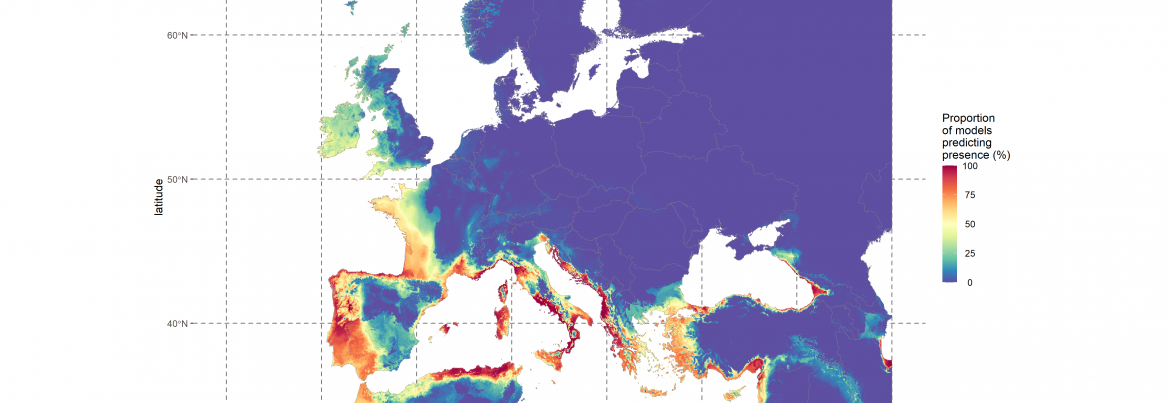


URZF team published a scientific paper on the potential geographical distribution of X. crassiusculus
and X. compactus, two invasive ambrosia beetles. Both species originate from South-East Asia and are
invasive in Africa, in the Americas, in Oceania and more recently in Europe, where they were detected
in 2003 and 2011, respectively. This study modelled suitable and non-suitable areas for both species
according to present and future climate, using climate projections for 2050 and 2070 for 4 different
greenhouse gas concentration scenarios.
The models created for each species were evaluated on their
capacity to predict European invasion and their performances, measured by their AUC (Area Under
Curve). The study showed that X. compactus’ current distribution is limited compared to its suitable
areas, especially in Europe where most Mediterranean and Atlantic coasts are predicted as suitable
but not yet invaded. Regarding the future distribution, the models predict a progression of the suitable
areas towards Northeastern Europe, Northern USA, Uruguay, Central Africa, Oceania and some regions
of Asia. Simultaneously, the study predicts a regression in North Africa, Easternmost parts of the
Mediterranean, Central America, Venezuela and some parts of the USA.
The weak performance of the models created for X. crassiusculus prevented from making predictions.
The principal hypothesis to explain this results is that the species’ genetic structure was overlooked.
According to Storer et al. in 2017 *, X. crassiusculus can be divided in two clusters (genetically differenciatd groups),
which might have different ecological preferences, and thus, should have been considered while modelling. The
study suggests that these results should be included when performing pest risk analyses.
You can find the article here in open access: https://rdcu.be/cdys0
* Storer, C., Payton, A., McDaniel, S., Jordal, B. & Hulcr, J. Cryptic genetic variation in an inbreeding
and cosmopolitan pest, Xylosandrus crassiusculus, revealed using ddRADseq. Ecology and Evolution
7, 10974-10986, doi:10.1002/ece3.3625 (2017).